
Siquijor: The Mystic Island of Enchantment
Discover the enchanting island of Siquijor in the Philippines, known for its mystical folklore, stunning natural beauty, and rich cultural heritage.
Siquijor, an enchanting island in the Philippines, is known for its mystical charm and natural beauty. Often referred to as the 'Island of Fire,' Siquijor has a reputation for folklore and legends. Visitors are drawn to its serene beaches, lush forests, and vibrant marine life. The island is a paradise for nature lovers and adventure seekers. You can explore stunning waterfalls like Cambugahay Falls and Lugnason Falls, which offer refreshing swims in their clear waters. The Salagdoong Beach is famous for its crystal-clear waters and cliff diving spots, making it a must-visit for thrill-seekers. Siquijor is also known for its historical sites, such as the centuries-old St. Francis of Assisi Church and the Lazi Convent, which showcases the island's rich cultural heritage. The San Isidro Labrador Church, another historical landmark, stands as a testament to the island's colonial past. Don't miss the chance to experience the local healing traditions, with faith healers and herbalists practicing age-old rituals. The island's mystical reputation is further enhanced by the eerie yet fascinating Balete Tree, where you can get a unique fish spa treatment in the natural spring at its base. Whether you're looking to relax on pristine beaches, dive into underwater adventures, or delve into the island's mystical past, Siquijor offers a unique and unforgettable experience.
Local tips in Siquijor
- Rent a motorbike to explore the island at your own pace.
- Visit during the dry season (November to May) for the best weather.
- Bring cash, as ATMs are limited and not all places accept credit cards.
- Try the local delicacies, especially the fresh seafood.
- Respect local customs and be open to learning about traditional healing practices.
Siquijor: The Mystic Island of Enchantment
Siquijor, an enchanting island in the Philippines, is known for its mystical charm and natural beauty. Often referred to as the 'Island of Fire,' Siquijor has a reputation for folklore and legends. Visitors are drawn to its serene beaches, lush forests, and vibrant marine life. The island is a paradise for nature lovers and adventure seekers. You can explore stunning waterfalls like Cambugahay Falls and Lugnason Falls, which offer refreshing swims in their clear waters. The Salagdoong Beach is famous for its crystal-clear waters and cliff diving spots, making it a must-visit for thrill-seekers. Siquijor is also known for its historical sites, such as the centuries-old St. Francis of Assisi Church and the Lazi Convent, which showcases the island's rich cultural heritage. The San Isidro Labrador Church, another historical landmark, stands as a testament to the island's colonial past. Don't miss the chance to experience the local healing traditions, with faith healers and herbalists practicing age-old rituals. The island's mystical reputation is further enhanced by the eerie yet fascinating Balete Tree, where you can get a unique fish spa treatment in the natural spring at its base. Whether you're looking to relax on pristine beaches, dive into underwater adventures, or delve into the island's mystical past, Siquijor offers a unique and unforgettable experience.
When is the best time to go to Siquijor?
Iconic landmarks you can’t miss
Cambugahay Falls
Experience the breathtaking beauty of Cambugahay Falls, a stunning natural attraction in Siquijor, Philippines, perfect for swimming and relaxation.

Old Enchanted Balete Tree
Experience the enchanting beauty and mystical folklore surrounding the Old Enchanted Balete Tree, a must-see natural landmark in Siquijor, Philippines.
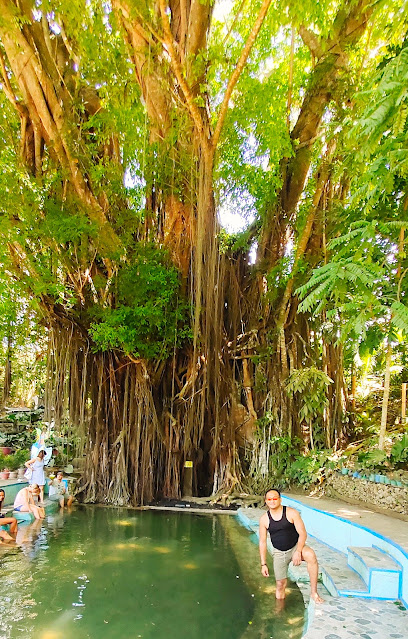
Butterfly Sanctuary
Discover the magical world of butterflies at Siquijor's Butterfly Sanctuary, a serene oasis perfect for nature lovers and photographers.

Lugnason Falls
Explore the breathtaking beauty of Lugnason Falls in San Juan, Siquijor, where adventure meets tranquility in a tropical paradise.

Hapitanan
Experience the natural beauty and rich culture of Hapitanan in Lazi, Siquijor – a serene paradise for every traveler.

Cantabon Cave
Discover the enchanting beauty of Cantabon Cave in Siquijor, where adventure and nature intertwine in a breathtaking limestone wonder.

Pitogo Cliff Nature Park
Explore the breathtaking beauty and serene landscapes at Pitogo Cliff Nature Park in San Juan, Siquijor, a perfect destination for nature lovers and adventurers.

Lazi Convent
Discover the historic beauty of Lazi Convent in Siquijor, a tranquil landmark that reflects the rich cultural heritage of the Philippines.

La Gaan Falls
Explore the breathtaking beauty of La Gaan Falls in Siquijor, a hidden gem perfect for nature lovers and adventure seekers alike.

Sambulawan Underground River
Experience the stunning beauty and rich folklore of Sambulawan Underground River, a hidden gem in Siquijor, Philippines, perfect for adventurous travelers.

Kanheron Ranch
Discover the charm of Siquijor with horseback riding and stunning landscapes at Kanheron Ranch, a perfect family getaway in the heart of nature.

Marelle's Seashell Museum
Explore Marelle's Seashell Museum in Siquijor, a treasure trove of marine life showcasing thousands of seashells and interactive exhibits for all ages.
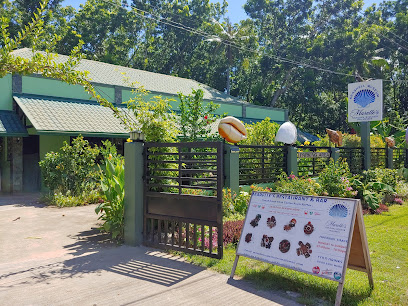
I Love Siquijor Signage
Discover the heart of Siquijor at the iconic 'I Love Siquijor' signage, a vibrant spot perfect for memorable photos and connecting with fellow travelers.

Cangbangag Falls
Discover the breathtaking beauty of Cangbangag Falls, a serene oasis in Siquijor, perfect for nature lovers and adventure seekers alike.

Caticugan Marine Sanctuary
Explore the vibrant underwater world of Caticugan Marine Sanctuary, a must-visit destination in Siquijor for snorkeling, diving, and nature lovers.

Unmissable attractions to see
Butterfly Sanctuary
Discover the enchanting Butterfly Sanctuary in Siquijor, a vibrant haven showcasing diverse butterfly species in a lush, educational garden setting.
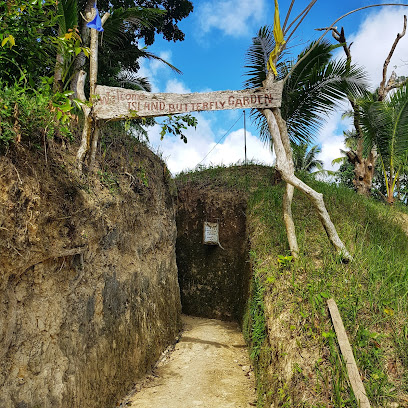
Hapitanan
Experience the serene beauty and vibrant culture at Hapitanan, a must-visit tourist attraction in Siquijor, Philippines.

Cantabon Cave
Discover the enchanting beauty of Cantabon Cave in Siquijor, a hidden gem featuring stunning geological formations and rich biodiversity for every adventurer.

Pitogo Cliff Nature Park
Explore the breathtaking views and adventure at Pitogo Cliff Nature Park in San Juan, Siquijor, a must-visit destination for nature lovers.

Tulapos Marine Sanctuary
Explore Tulapos Marine Sanctuary in Siquijor, a breathtaking underwater paradise perfect for snorkeling and appreciating diverse marine life.

La Gaan Falls
Experience the breathtaking beauty of La Gaan Falls, a hidden gem in Siquijor's lush landscape, perfect for adventure and relaxation.
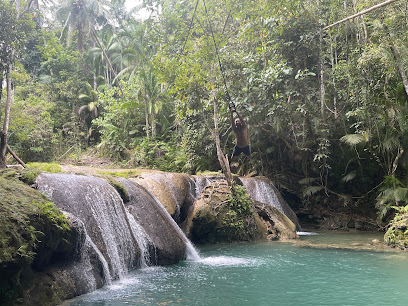
Sambulawan Underground River
Discover the breathtaking Sambulawan Underground River in Lazi, Siquijor – a hidden gem for adventure seekers and nature lovers.

Kanheron Ranch
Discover the unique charm of the Wild West at Kanheron Ranch, a captivating tourist attraction in Siquijor, Philippines.

Marelle's Seashell Museum
Explore Marelle's Seashell Museum in Siquijor, where the enchanting world of seashells and marine artifacts come alive in a captivating setting.
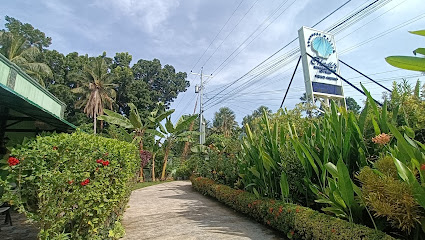
Kawasan Falls & Cave
Experience the breathtaking beauty of Kawasan Falls & Cave, a natural paradise in Siquijor, perfect for swimming, adventure, and relaxation.

Mt. Bandilaan National Park
Explore the serene beauty of Mt. Bandilaan National Park in Siquijor, a paradise for nature lovers with stunning views and diverse wildlife.
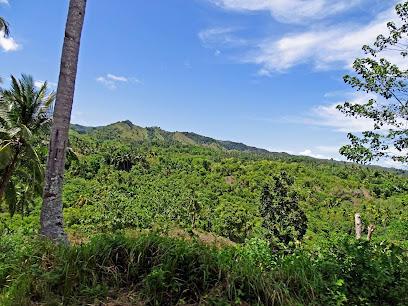
I Love Siquijor Signage
Capture the essence of Siquijor at the iconic 'I Love Siquijor' signage, a vibrant landmark perfect for memorable photos amidst stunning island scenery.

Locong Falls
Explore the breathtaking Locong Falls in Lazi, Siquijor - a serene retreat surrounded by nature's beauty and perfect for relaxation and adventure.
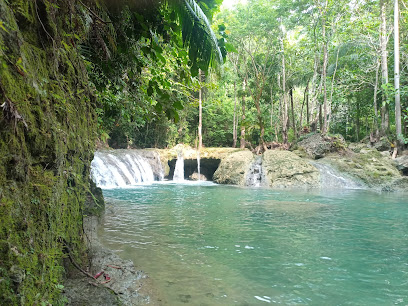
Cangbangag Falls
Explore the breathtaking Cangbangag Falls in Siquijor, a hidden paradise perfect for nature lovers and adventure seekers alike.
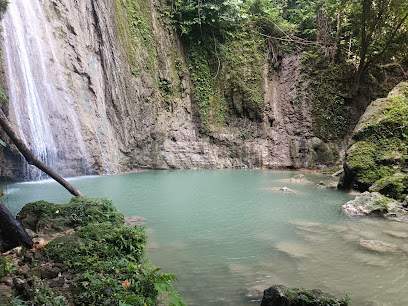
Caticugan Marine Sanctuary
Discover the breathtaking beauty of Caticugan Marine Sanctuary, a tropical paradise in the Philippines known for its vibrant marine life and stunning coral reefs.

Essential places to dine
Baha Ba’r
Discover Baha Ba’r in Siquijor - where culinary artistry meets breathtaking views for an unforgettable dining experience.

Marco Polo Italian Restaurant
Discover authentic Italian cuisine at Marco Polo Italian Restaurant in Siquijor - where every meal is a celebration of flavor!

Wakanda Restaurant & Bar
Savor exquisite local and international cuisine at Wakanda Restaurant & Bar in Siquijor – where every meal is a celebration.

Luca Loko
Experience the flavors of Siquijor at Luca Loko – where culinary artistry meets warm hospitality in a picturesque setting.

Monkey Business
Experience the best of Filipino cuisine at Monkey Business - a culinary gem in Siquijor that promises unforgettable flavors and warm hospitality.

Dagsa Resto Bar
Experience the vibrant flavors and warm ambiance at Dagsa Resto Bar in San Juan, Siquijor - where every meal is a celebration.

Twenty4 Restaurant and Burger Bar
Discover delicious burgers and delightful local cuisine at Twenty4 Restaurant and Burger Bar in Lazi, Siquijor.
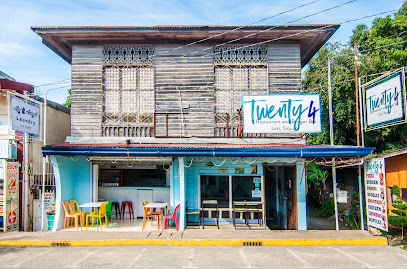
Aroi Makmak Thai station cafe and restaurant
Experience authentic Thai cuisine at Aroi Makmak in Siquijor - where every dish tells a flavorful story amidst tropical charm.

Angel Wish
Experience delectable seafood and heartwarming breakfasts at Angel Wish on Siquijor Island – where every meal is a taste of paradise.

Mr. SUMO Siquijor
Savor authentic Japanese cuisine at Mr. SUMO Siquijor - where fresh ingredients meet culinary excellence.

Roch Cuisine
Experience authentic Filipino flavors at Roch Cuisine in San Juan, Siquijor - where every dish tells a story.

Chekesh Casa
Experience authentic Filipino cuisine at Chekesh Casa in San Juan, Siquijor - where every dish tells a story.

Bellview Kuzzina Bar
Experience authentic Filipino cuisine and vibrant nightlife at Bellview Kuzzina Bar in beautiful Siquijor.

Y Road Restaurant
Discover family-friendly dining at Y Road Restaurant in Siquijor – where local flavors meet warm hospitality amidst stunning surroundings.

Cockatoo Restaurant
Discover flavorful Filipino cuisine at Cockatoo Restaurant in Siquijor, where stunning views meet authentic dining experiences.

Markets, malls and hidden boutiques
Alfonso Siquijor Plaza (Estallo) Store
Explore the Alfonso Siquijor Plaza Store for unique local goods and souvenirs that showcase the charm and culture of Siquijor Island.
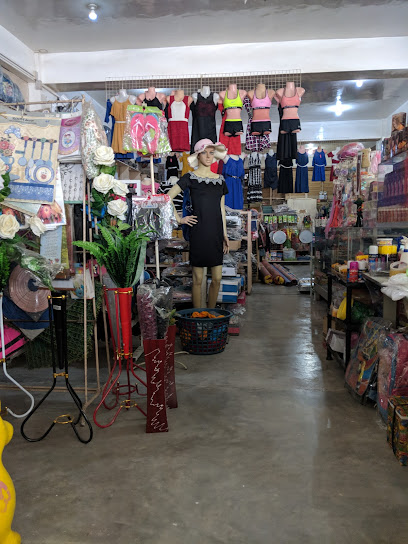
Kalinaw Siquijor
Discover authentic Filipino crafts at Kalinaw Siquijor, a boutique in San Juan offering unique souvenirs and local artistry.

Isla's Chibugan and Party Needs
Explore the heart of Siquijor at Isla's Chibugan and Party Needs, your go-to convenience store for essentials and local delights.
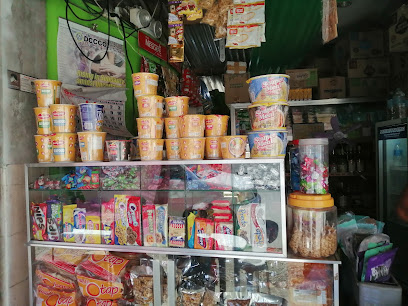
Vapers Point Siquijor (Siquijor Main Branch)
Discover Vapers Point Siquijor: The ultimate destination for vaping enthusiasts in a vibrant local atmosphere.

Mar and Peck Souvernirs, Siquijor
Explore Mar and Peck Souvenirs in Siquijor for unique, handcrafted treasures that capture the spirit of your travels and support local artisans.
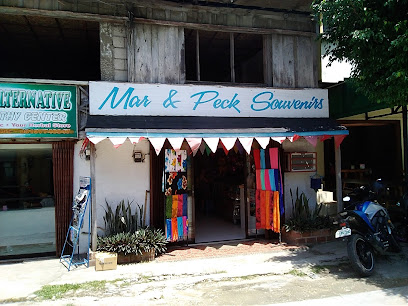
Island Lokal artisan products
Explore the artistry of Siquijor at Island Lokal, your go-to gift shop for unique, handmade artisan products that embody the island's spirit.

Jorie’s Fashion House
Explore Jorie’s Fashion House for unique hand-crafted bags and accessories that embody the vibrant spirit of Siquijor's local craftsmanship.

Hobbies Sporting Goods Shop
Discover your adventure essentials at the Hobbies Sporting Goods Shop in Siquijor, where outdoor enthusiasm meets island charm.
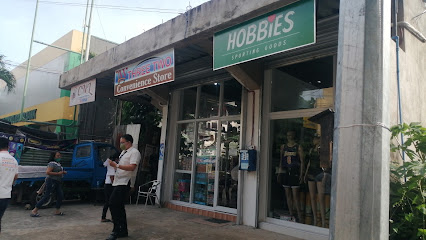
Siquijor Bales RTW trading
Explore unique fashion at Siquijor Bales RTW Trading, where local culture meets stylish clothing and accessories.
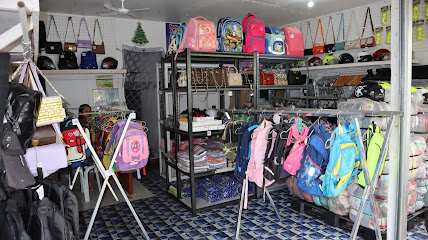
Trend Portal Online Shop (JS Siquijor)
Uncover the charm of Siquijor at Trend Portal Online Shop, where local treasures and unique souvenirs await every traveler.

Alrex Souvenir Shop and Pasalubong Center
Discover Alrex Souvenir Shop: Your go-to destination for authentic local crafts and delectable treats in Siquijor.

Siquijor Products Kiosk
Explore the Siquijor Products Kiosk for handcrafted treasures and authentic souvenirs that capture the spirit of the island.

NextLvl Siquijor Clothing Boutique
Explore Siquijor's vibrant fashion scene at NextLvl Siquijor Clothing Boutique, your go-to destination for stylish women's apparel.

Mag-usara Store
Experience the heart of Siquijor at Mag-usara Store – a welcoming general store filled with local treasures and island charm.

Segundo's Variety Store
Explore the charming Segundo's Variety Store in Siquijor for a delightful mix of clothing and local treasures that embody the spirit of the island.

Essential bars & hidden hideouts
Baha Ba’r
Discover the culinary delights of Baha Ba’r in Siquijor, where local flavors meet breathtaking views and a vibrant atmosphere.

Get Wrecked Beach & Sports Bar
Experience the perfect blend of beachside relaxation and vibrant sports entertainment at Get Wrecked Beach & Sports Bar in Siquijor.

Hidden Valley Bar & Resto
Experience authentic Filipino cuisine amidst the stunning landscapes of Lazi at Hidden Valley Bar & Resto, your culinary haven in Siquijor.

Bellview Kuzzina Bar
Discover the vibrant ambiance and delicious offerings at Bellview Kuzzina Bar in Siquijor, where every visit is a delightful experience.

Republika Beach Bar
Discover the best grilled delights and stunning beach views at Republika Beach Bar in San Juan, Siquijor.

Cockatoo Restaurant
Discover the flavors of Siquijor at Cockatoo Restaurant, where fresh seafood and local delights meet stunning views and vibrant ambiance.
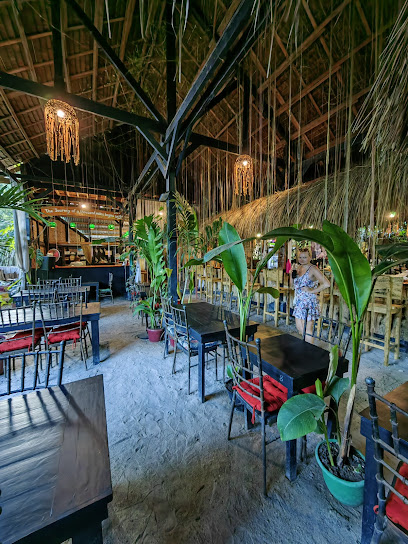
Mystropical Bar
Discover the vibrant flavors of Mystropical Bar in Siquijor, where exquisite cocktails and a stunning tropical ambiance await.
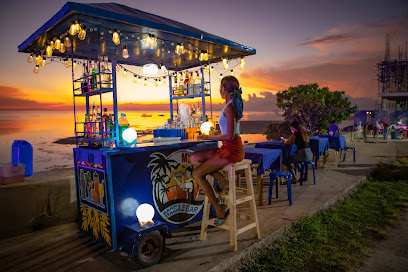
Tipsy Bar
Experience the vibrant nightlife and exquisite cocktails at Tipsy Bar, a must-visit destination in Siquijor, Philippines.

El Kabron Siquijor
Experience the vibrant atmosphere and breathtaking views at El Kabron Siquijor, the ultimate beach bar for relaxation and enjoyment in paradise.

RumBar
Discover the charm of RumBar in San Juan, Siquijor, where tropical drinks and delicious cuisine meet stunning views and vibrant atmosphere.

G-Spot Bistro
Discover the delightful flavors and vibrant atmosphere of G-Spot Bistro, a must-visit culinary destination in Siquijor.

Vikings Sportsbar and KTW Bar
Experience the vibrant nightlife of Larena at Vikings Sportsbar and KTW Bar, where great drinks, tasty snacks, and a lively atmosphere await.

MYN Sunset View Bar & Grill
Experience exquisite dining and breathtaking sunset views at MYN Sunset View Bar & Grill in Siquijor, the perfect getaway for food and nature lovers.

White Sand Bar Stop
Experience the ultimate beach getaway at the White Sand Bar Stop, where relaxation meets vibrant nightlife in Siquijor.

Buccaneer Sun Kissed Bar
Experience the vibrant atmosphere at Buccaneer Sun Kissed Bar in Siquijor, where tropical drinks and local culture come together for an unforgettable nightlife experience.

Local Phrases about Siquijor
-
- HelloKumusta
[Koo-moo-sta] - GoodbyePaalam
[Pa-a-lam] - YesOo
[Oh-oh] - NoHindi
[Heen-dee] - Please/You're welcomeSalamat
[Sa-la-mat] - Thank youSalamat
[Sa-la-mat] - Excuse me/SorryPasensya
[Pa-sen-sya] - How are you?Kamusta ka?
[Ka-moo-sta ka?] - Fine. And you?Mabuti. Ikaw?
[Ma-boo-tee. Ee-kaw?] - Do you speak English?Nagsasalita ka ng Ingles?
[Nag-sa-sa-lee-ta ka ng Ing-gles?] - I don't understandHindi ko maintindihan
[Heen-dee ko main-tin-dee-han]
- HelloKumusta
-
- I'd like to see the menu, pleaseGusto ko makita ang menu, pakiusap
[Goo-sto ko ma-kee-ta ang me-nu, pa-ki-oo-sap] - I don't eat meatHindi ako kumakain ng karne
[Heen-dee a-ko koo-ma-ka-een ng kar-ne] - Cheers!Mabuhay!
[Ma-boo-hay!] - I would like to pay, pleaseGusto ko magbayad, pakiusap
[Goo-sto ko mag-ba-yaad, pa-ki-oo-sap]
- I'd like to see the menu, pleaseGusto ko makita ang menu, pakiusap
-
- Help!Tulong!
[Too-long!] - Go away!Lumayo ka!
[Loo-ma-yo ka!] - Call the Police!Tawag sa Pulis!
[Ta-wag sa Pu-lis!] - Call a doctor!Tawag sa doktor!
[Ta-wag sa dok-tor!] - I'm lostNawawala ako
[Na-wa-wa-la a-ko] - I'm illMay sakit ako
[May sa-kit a-ko]
- Help!Tulong!
-
- I'd like to buy...Gusto ko bumili ng...
[Goo-sto ko boo-mi-li ng...] - I'm just lookingNagtitignan lang ako
[Nag-tee-tee-nyan lang a-ko] - How much is it?Magkano ito?
[Mag-ka-no ee-to?] - That's too expensiveMasyadong mahal
[Mah-sya-dong ma-hal] - Can you lower the price?Pwede bang ibaba ang presyo?
[Pwe-de bang e-ba-ba ang pres-yo?]
- I'd like to buy...Gusto ko bumili ng...
-
- What time is it?Anong oras na?
[A-nong o-ras na?] - It's one o'clockAlas-una na
[A-las-oo-na na] - Half past (10)Alas-dyes y medya
[A-las-dyes ee med-ya] - MorningUmaga
[Oo-ma-ga] - AfternoonHapon
[Ha-pon] - EveningGabi
[Ga-bee] - YesterdayKahapon
[Ka-ha-pon] - TodayNgayon
[Ngai-yon] - TomorrowBukas
[Bu-kas] - 1Isa
[Ee-sa] - 2Dalawa
[Da-la-wa] - 3Tatlo
[Tat-lo] - 4Apat
[A-pat] - 5Lima
[Lee-ma] - 6Anim
[A-neem] - 7Pito
[Pee-to] - 8Walo
[Wa-lo] - 9Siyam
[See-yam] - 10Sampu
[Sam-poo]
- What time is it?Anong oras na?
-
- Where's a/the...?Nasaan ang...
[Na-saan ang...] - What's the address?Ano ang address?
[A-no ang address?] - Can you show me (on the map)?Pwede mo ba akong ipakita (sa mapa)?
[Pwe-de mo ba a-kong ee-pa-kee-ta (sa ma-pa)?] - When's the next (bus)?Kailan ang susunod na (bus)?
[Kai-lan ang su-su-nod na (bus)?] - A ticket (to ....)Isang tiket (papunta sa ....)
[Ee-sang ti-ket (pa-poon-ta sa ....)]
- Where's a/the...?Nasaan ang...
History of Siquijor
-
Before the arrival of the Spanish in the 16th century, Siquijor was known to its native inhabitants as 'Katugasan,' a name derived from the 'tugas' trees (molave trees) that were abundant on the island. The island was a part of the expansive trade networks of the Visayas region and was influenced by Malay and Chinese traders.
-
Siquijor was officially 'discovered' by Esteban Rodríguez of the Legazpi Expedition in 1565. The Spanish colonizers named the island 'Isla del Fuego' or 'Island of Fire' due to the eerie glow produced by swarms of fireflies that inhabited the molave trees. The Spanish influence led to the establishment of Catholicism, with the construction of historical churches such as the St. Francis of Assisi Church in the town of Siquijor and the San Isidro Labrador Church in Lazi.
-
Following the Spanish-American War in 1898, the Philippines was ceded to the United States. Siquijor, along with other islands, came under American rule. During this period, significant infrastructure developments took place, including the improvement of roads and public education systems. The island also became more accessible to the outside world.
-
During World War II, Siquijor was occupied by Japanese forces. The island's strategic location made it a target for military operations. Local guerrilla groups formed to resist the occupation, contributing to the broader Philippine resistance movement. The end of the war saw the island liberated by Allied and Filipino forces.
-
After World War II, Siquijor transitioned into the Republic of the Philippines. The island remained relatively quiet and less developed compared to other regions. However, it began to gain attention for its natural beauty and unique culture. Today, Siquijor is known for its mystical traditions, including faith healing and herbal medicine, which attract both tourists and scholars.
Siquijor Essentials
-
Siquijor is an island province in the Philippines, accessible primarily by ferry. The nearest major airport is Dumaguete’s Sibulan Airport on the neighboring island of Negros. From Dumaguete, you can take a ferry to Siquijor, which takes about 1.5 to 2 hours. Ferries also operate from Cebu and Bohol directly to Siquijor. It is advisable to check ferry schedules in advance as they can vary based on weather conditions and season.
-
Once on Siquijor, transportation options include tricycles, motorcycles, scooters, and vans. Tricycles are convenient for short distances and are plentiful around the ports and main towns. For more independence, consider renting a scooter or motorcycle, which allows you to explore the island at your own pace. Vans are available for larger groups or longer trips. Note that public transportation options are limited, so planning your travel in advance is recommended.
-
The official currency in the Philippines is the Philippine Peso (PHP). While some establishments in Siquijor accept credit cards, it's advisable to carry cash, especially when visiting smaller shops, markets, and rural areas. ATMs are available in the main towns, but they can sometimes be unreliable or run out of cash. It’s wise to withdraw enough cash in larger cities like Dumaguete before heading to Siquijor.
-
Siquijor is generally a safe destination for tourists. However, standard precautions should always be taken. Avoid walking alone late at night in unfamiliar or poorly lit areas, and keep an eye on your belongings in crowded places. While there are no specific high-crime areas targeting tourists, always stay vigilant and be aware of your surroundings. Respect local customs and traditions to avoid any misunderstandings.
-
In case of an emergency, dial 911 for immediate assistance. The island has several medical facilities, including the Siquijor Provincial Hospital located in the town of Siquijor. It is advisable to have travel insurance that covers medical emergencies. There are also pharmacies in the towns where you can purchase over-the-counter medications and basic health supplies.
-
Fashion: Do dress modestly, especially in religious sites and rural areas. Avoid wearing overly revealing clothing. Religion: Do be respectful of local religious practices. Do not disturb people who are praying or participating in religious activities. Public Transport: Do be polite and patient when using public transport. Avoid eating or drinking on public transport. Greetings: Do greet locals with a smile and a simple 'Hello' or 'Mabuhay'. A polite handshake is also common. Eating & Drinking: Do try local delicacies and accept food offerings graciously. Don’t waste food, as it is considered disrespectful.
-
To experience Siquijor like a local, visit the local markets where you can buy fresh produce, seafood, and traditional Filipino goods. Engage with the locals who are often friendly and willing to share stories about the island’s folklore and history. Don’t miss visiting the island’s natural attractions, such as Cambugahay Falls, Salagdoong Beach, and the Enchanted Balete Tree. For a unique experience, participate in local festivals and cultural events, which offer a glimpse into the island’s rich heritage.
Trending Landmarks in Siquijor
Nearby Cities to Siquijor
-
Things To Do in Cebu City
-
Things To Do in Camiguin
-
Things To Do in Cagayan de Oro
-
Things To Do in Siargao
-
Things To Do in Zamboanga City
-
Things To Do in Davao City
-
Things To Do in Boracay
-
Things To Do in Legazpi
-
Things To Do in Puerto Princesa
-
Things To Do in Palawan
-
Things To Do in Tagaytay
-
Things To Do in Manila
-
Things To Do in Sandakan
-
Things To Do in Subic
-
Things To Do in Angeles City











